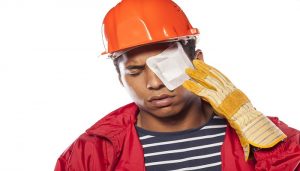
Eye Safety at Work
Eye injuries in the workplace are surprisingly common: every day, 700 Canadian workers sustain eye injuries on the job, often resulting in lost time and, in some cases, either temporary or permanent vision loss. This figure is sobering given that the majority of eye injuries are preventable.
In this section you can learn about safety eyewear for your workplace, the rights and responsibilities of both employees and employers in matters of workplace eye safety.
Most industrial eye injuries can be prevented by wearing the right protection on the job. Protective eyewear includes:
- Non-prescription and prescription safety glasses
- Goggles
- Face shields
- Welding helmets
- Full-face respirators
Whatever the protection, it is important to properly maintain and store it, to ensure a longer shelf life and to maximize protection. Here are some other things to keep in mind when it comes to safety eyewear:
- Always wear protective eyewear that was specifically designed for the task at hand.
- Keep your safety glasses on even when you wear other protection like a welding helmet or face shield. Flying chips or dust can get under the shield if you lift the visor.
- Match your eye protection to the hazard: goggles that protect you from dust may not protect you from splashes or radiation.
- Clean lenses with water or a lens-cleaning solution to float dirt away, rather than scratching it into the lens. Look for the Canadian Standards Association (CSA) mark on safety eyewear. This stamp ensures that it meets or exceeds existing CSA safety standards.
- Make sure the equipment fits properly. It should be snug but not uncomfortable.
- Never tamper with your equipment.
- Inspect plastic visors or protectors for scratches that may limit vision or cracks that can weaken the structural strength.
- Choose eye protection with polycarbonate lenses. Polycarbonate is impact and scratch resistant. Polycarbonate lenses are better at transmitting light and providing clear vision, and they are the thinnest and lightest lenses available.
- Always keep a spare pair of protective eyewear handy, just in case.
Workers should wear safety eyewear whenever there is a chance of eye injury. In addition, anyone visiting or passing through areas that pose eye hazards should wear protective eyewear. Contact lens wearers must be especially careful and should always wear protective eyewear on site: dust and other particles can become lodged under the lens and can cause irritations or infections. Workers who work in the sun or using equipment that exposes them to ultraviolet radiation should also use appropriate eye protection.
